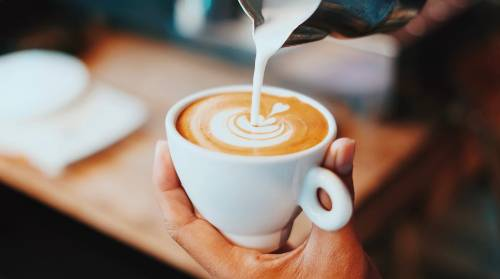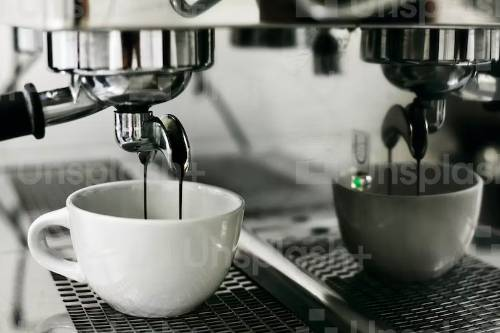coffee consumers

Top Coffee-Eating Nations: Where most coffee consumers live
How do the various nations of the world compare in terms of coffee consumption? To believe that anyone consumes more coffee than Americans g, given the prevalence of Starbucks, McDonald's conversion of numerous outlets to McCafe, and the importance of Dunkin Donuts in many morning commutes. However, compared to other extra-large coffee-drinking brewing coffee countries, the USA consumes a medium-sized amount of coffee and
coffee statistics per person. While the first places that come to mind when considering coffee and its coffee consumers "home" are frequently a Parisian café or an Italian espresso bar, none of these countries rank in the top ten for the amount of coffee consumed per capita. Instead, the origin of coffee drinking is Yemen, which dates back to the 15th century.
Finland coffee consumption: 26.45 pounds per person
The national average of 26.45 pounds (12 kg) per person is definitely on the low end for most Finns, as anyone with aet one would attest. The national average of coffee drinkers would increase much more if you excluded children from the computation! Coffee is routinely consumed daily, and most labor unions mandate regular coffee breaks on coffee market. A coffee table is used to serve a buffet of cold sandwiches, slices of bread, cookies, cakes, and, of course, endless "kava" for special occasions and post-church luncheons. In Finland, very light roasts are the most popular for coffee consumption by country, far liweakerhan everywhere in a variation on Turkish coffee; traditional Finnish coffee is made by continually bringing water and coffee grinds to a very low boil. Finnish coffee culture and coffee drinking habits may have been influenced by various factors, including the Lutheran work ethic, Swedish control, and coffee beans. Still, one thing is for sure coffee won't be disappearing any time soon. Don't expect decaf if invited to a Finnish home; the Nordic nation hardly ever serves it. Instead, be prepared for steaming pots of coffee.
Norway coffee shops: 21.82 pounds per person
In Norway, as in most of Europe, the wealthy were the first to adopt coffee in the early 18th century. Even though Norway was still a developing nation, living under Danish sovereignty had perks. Specifically, lots of inexpensive coffee. Rally Kaffe coffee houses is consumed unsweetened for breakfast and as a dessert after dinner. Additionally, inviting guests over expressly for coffee and pastries is a frequent practice among Norwegians. Eighty percent of the country's 5 million or so residents drink coffee and instant coffee, many of them four to five times per day. Don't forget to try "karsk," a cocktail made of weakly brewed coffee, sugar, and a generous portion of moonshine, if you ever find yourself in rural Norway. Don't worry; you can always set it on fire to burn off some of the alcohol if it's too powerful!
Iceland: 19. 84 pounds per person

Iceland is an island nation like its neighbors in northern Europe, and it loves its coffee. There is undoubtedly a connection between cold weather and a cup of coffee for drip coffee maker; perhaps it gives remaining indoors on a chilly, dark day the ideal amount of coziness. Starbucks and Second Cup are not present in Iceland's capital, Reykjavik. However, the city is not short of the installer, independent coffee shops, many of which are located near one another. Iceland holds competitions that pit baristas and roasters against one another to determine the nation's top-quality brew, just in case there is any doubt about whether or not the country takes its coffee consumption seriously.
Denmark drink coffee: 19. 18 pounds per person
If the nations of the Nordic region are considered to be the kings of coffee, then this nation is appropriately referred to as the Danish Prince of the dark roast beverage and green coffee beans. On average, each person in the kingdom consumes 1.46 cups of coffee each and every day. The fact that coffee in Denmark is the sixth most expensive in the world, which puts Danes in a slightly better position, means that each cup of coffee costs them a good deal of money. This practice is common in Denmark, as it is in other Scandinavian countries, and highest coffee consumption is typically served with pastries, cakes, and small sandwiches at every meal. Daydream about springtime in Copenhagen as you munch on some appropriately named danishes and brew coffee with a Danish coffee press produced in Denmark.
Netherlands and coffee beans: 18. 52 pounds per person
Pieter van den Broecke brought back live coffee trees from Mocha, Yemen, for the Dutch in 1616, making them the first people in Europe to do so. After using the beans from these coffee plants to start Dutch coffee cultivation, Java and Suriname became essential sources of coffee for Europe. Today, coffee culture is still robust and rich in the Netherlands, and coffee shops in Amsterdam are well known for providing coffee alongside another specialty item: marijuana (but don't let that cloud your view). The Dutch consume 2. 4 cups of coffee each day on average. For "Koffietijd" (Coffee Time), coffee is typically offered in the home with cakes and sweets. It's interesting to note that there is a religious and regional divide in coffee culture between the North and the South. Protestants have historically dominated the North and tried to serve coffee with just one biscuit as a sign of modesty. The "vlaai," a sizable sweet pie, is a common component of Koffietijd in the South, which Romana Catholics typically populate
Sweden: 18 lbs per person
The phrase "to have coffee" is literally translated from the Swedish word "fika," which means "to have." This is a wonderful idea for matching biscuits or pastries. The word "Fika" may refer to a variety of occasions, such as get-togethers with friends or breaks throughout the workday. The only major thing that both of them have in common is that coffee is a component of one of them. Coffee is regarded as both a beverage and a way of life in Sweden due to the serious attitude held by many Swedes about its use. In spite of the fact that one may have a cup of coffee in the seclusion of their own home, socializing over coffee is more common. Large cities such as Stockholm, the capital of Sweden, are home to a plethora of coffee shops, including both chain and independent operations.